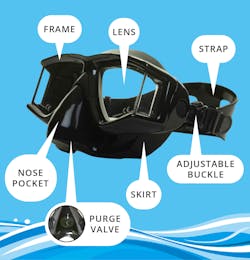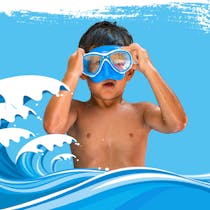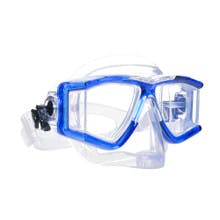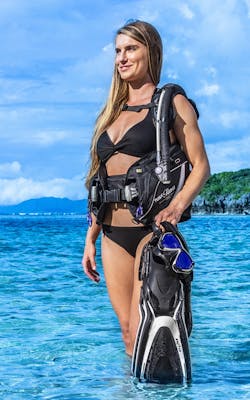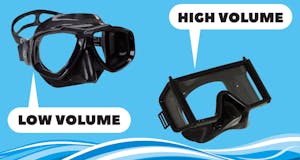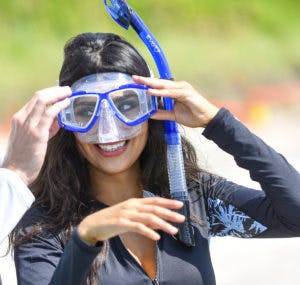Scuba Mask FAQs
How should a scuba mask fit?
A scuba mask should fit your face just right to create a watertight seal and be comfortable to wear. A scuba mask that’s too tight will be uncomfortable and frustrating. A mask that’s too loose won’t be able to hold the necessary watertight seal, causing overly frequent mask clearing. The best way to try on a scuba mask is to lean your head back, place the mask on (without the strap). Inhale lightly, then bring your head back to neutral. If it falls off, it’s too loose. If it feels like it’s squeezing your face, it may be too tight.
What does the purge valve on a dive mask do?
The purge valve on a dive mask is typically located right below your nose in the nose pocket. It features a one-way valve, and when you breathe out through your nose, any water that may have collected in your mask is pushed out quickly and easily.
Why does my scuba mask leak?
There are a couple reasons why your scuba mask may be leaking. The main one is that the mask may not fit correctly–it could simply be too large for your face. Or you could have a tear in your mask’s skirt or one of your lenses could be out of place. Be sure to check your mask for potential damage and, if repairable, get it fixed before your next dive. Finally, if you have long hair or a thick mustache, your hair could be getting into the skirt. This could prevent a proper watertight seal.
How do you stop a scuba mask from leaking?
If your scuba mask is damage-free and your hair isn’t a problem, your leakage issue is from an inappropriately-sized mask. Instead of trying to quick-fix the issue, it’s best to get yourself a new mask altogether. By stopping by your local Divers Direct and trying on some scuba masks using the fitting technique mentioned above, perhaps with a little guidance from one of our mask experts, you can find the perfect fitting mask for your face and fix your leakage issue once and for all.
How do you choose the right dive mask?
Choosing the right scuba mask will depend greatly on your niche diving activity, personal preferences, and face shape and size. It’s best to take a look at your personal interests as a diver (whether you’re into underwater photography or spearfishing) and your face size (do you have a large or small face?), then adjust your search accordingly so that you can find the proper fit for your face and activity. For more detail on how to choose the right mask for you, read through the Scuba Mask Buyer’s Guide above.
How do I get my scuba mask to stop fogging up?
When you buy a mask, you want to be sure you do the initial scrub to remove the lens film. Many masks manufacturers will come with a how-to to achieve this. Though, you can also use simple white toothpaste to get that foggy film off. There is also a mask accessory known as “spit” that you can use on your lenses before your dives. This spit keeps your mask from fogging up so you can better enjoy your dive.
What can I do to make my scuba mask fit properly?
If your mask doesn’t fit, you may be tempted to try some quick-fixes. Over-tightening your mask strap or squeezing your mask to your face won’t fix the problem long term. You will still be uncomfortable in your mask when doing this and could run the risk of water leaks and “squeeze” bruising around your face. The best thing to do is get yourself a new mask and make sure it's a proper fit for you.
Should I just wear contacts under my scuba mask?
No, you really don’t want to wear contacts underwater. When you clear your mask or if you need to take your mask off underwater, your contact could fall out. You definitely don’t want to touch your eye in saltwater. Many masks come with the option for corrective lenses you can use so that your vision through your mask can resemble your vision through your glasses.


